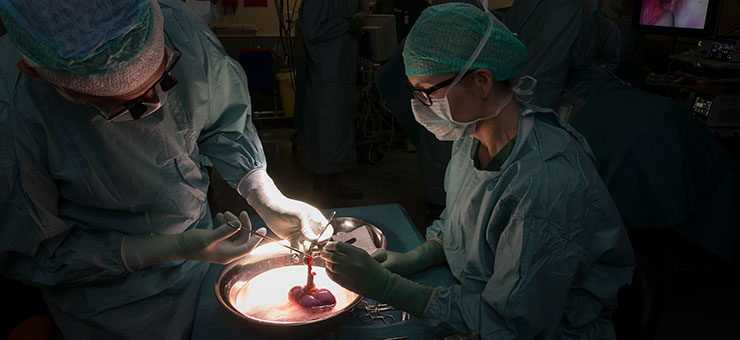Kidney transplants to increase with more living donors

The goal at Skåne University Hospital is to increase the number of patients who are transplanted before they become so ill that they need dialysis. The annual mortality rate for patients on dialysis is about 20 percent. For a kidney transplant patient, the corresponding figure is 2 to 3 percent.
"The result of a transplant is also better if it is done before the patient needs to be treated with dialysis", says Alireza Biglarnia, consultant and transplant surgeon at Skåne University Hospital.
Increased knowledge about donations
To increase the number of kidney transplants, the number of living donors must also increase. To achieve this, there are plans to set up a network of donation-responsible physicians and nurses at all hospitals that investigate donations in the Southern Health Care Region in Sweden. The goal is to have the network up and running during 2019.
“We are trying to decentralise the work. The physicians and nurses should be able to convey knowledge and lead the work at their own hospital to promote donations”, says Alireza Biglarnia.
Steps are also taken to improve the information about donations to patients and relatives. New information material on living kidney donation has been produced. The new material will be used throughout the Southern Health Care Region.
“Often, it is too late to inform about this with living donors, there is incorrect information on the internet and employees in the health care sector are not always so well-informed. This information should be given to the patient at an early stage”, says Alireza Biglarnia.
In 2019, the first transplants with so-called DCD donors (donations after circulatory death) were performed in Skåne. These kind of transplants help to strengthen the availability of organs.
Efforts to develop preventive interventions
In parallel with the development of the kidney transplant field, efforts are also being made to develop the preventive interventions and dialysis treatments.
"The goal is that fewer patients will need dialysis, which is often associated with poor quality of life and high mortality for the individual patient, and with high costs for society," says Anders Christensson, chief consultant in nephrology at Skåne University Hospital.
In the preventive work, particular attention is paid to cardiovascular disease and high blood pressure as it has a link to chronic kidney disease.
“Chronic kidney disease has a high mortality rate in cardiovascular disease. High blood pressure is most often the cause of chronic kidney failure. We are therefore looking at how patients can get better blood-pressure treatment. It is also important for a transplanted kidney to last a long time”, says Anders Christensson.
Research is an important part of developing kidney-disease care. At Skåne University Hospital, for example, research is being conducted on new preventive treatments that will help to make the results of a transplant as good as possible.
Facts: Kidney care in the Southern Health Care Region in Sweden
- About 91,000 people have an impaired kidney function.
- More than 900 patients are on dialysis.
- Every year, 65 to 70 kidney transplants are performed at Skåne University Hospital.
- 1,050 patients are checked annually after having undergone kidney transplantation.

